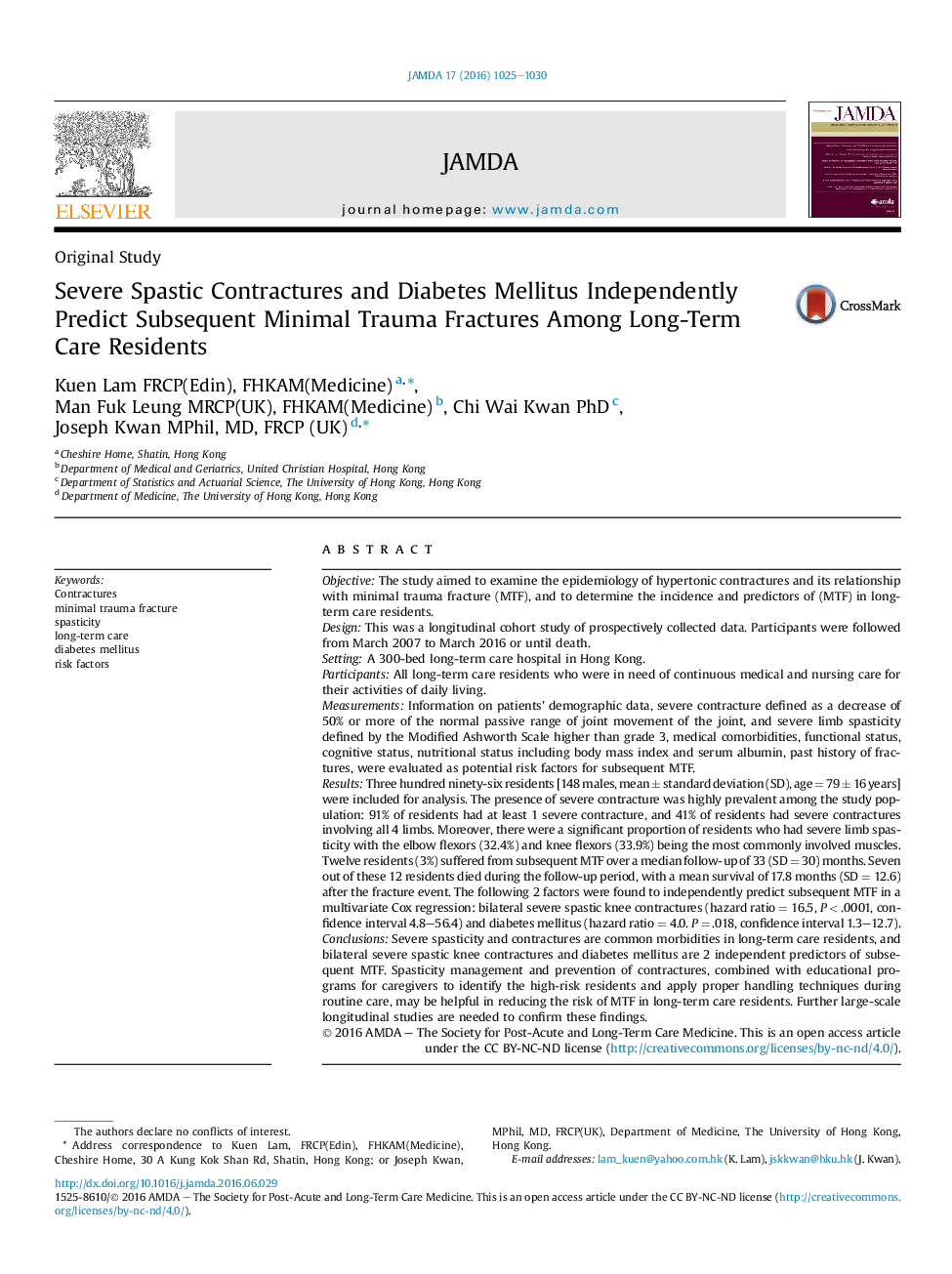| کد مقاله | کد نشریه | سال انتشار | مقاله انگلیسی | نسخه تمام متن |
|---|---|---|---|---|
| 5636821 | 1406691 | 2016 | 6 صفحه PDF | دانلود رایگان |

ObjectiveThe study aimed to examine the epidemiology of hypertonic contractures and its relationship with minimal trauma fracture (MTF), and to determine the incidence and predictors of (MTF) in long-term care residents.DesignThis was a longitudinal cohort study of prospectively collected data. Participants were followed from March 2007 to March 2016 or until death.SettingA 300-bed long-term care hospital in Hong Kong.ParticipantsAll long-term care residents who were in need of continuous medical and nursing care for their activities of daily living.MeasurementsInformation on patients' demographic data, severe contracture defined as a decrease of 50% or more of the normal passive range of joint movement of the joint, and severe limb spasticity defined by the Modified Ashworth Scale higher than grade 3, medical comorbidities, functional status, cognitive status, nutritional status including body mass index and serum albumin, past history of fractures, were evaluated as potential risk factors for subsequent MTF.ResultsThree hundred ninety-six residents [148 males, mean ± standard deviation (SD), age = 79 ± 16 years] were included for analysis. The presence of severe contracture was highly prevalent among the study population: 91% of residents had at least 1 severe contracture, and 41% of residents had severe contractures involving all 4 limbs. Moreover, there were a significant proportion of residents who had severe limb spasticity with the elbow flexors (32.4%) and knee flexors (33.9%) being the most commonly involved muscles. Twelve residents (3%) suffered from subsequent MTF over a median follow-up of 33 (SD = 30) months. Seven out of these 12 residents died during the follow-up period, with a mean survival of 17.8 months (SD = 12.6) after the fracture event. The following 2 factors were found to independently predict subsequent MTF in a multivariate Cox regression: bilateral severe spastic knee contractures (hazard ratio = 16.5, P < .0001, confidence interval 4.8-56.4) and diabetes mellitus (hazard ratio = 4.0. P = .018, confidence interval 1.3-12.7).ConclusionsSevere spasticity and contractures are common morbidities in long-term care residents, and bilateral severe spastic knee contractures and diabetes mellitus are 2 independent predictors of subsequent MTF. Spasticity management and prevention of contractures, combined with educational programs for caregivers to identify the high-risk residents and apply proper handling techniques during routine care, may be helpful in reducing the risk of MTF in long-term care residents. Further large-scale longitudinal studies are needed to confirm these findings.
Journal: Journal of the American Medical Directors Association - Volume 17, Issue 11, 1 November 2016, Pages 1025-1030